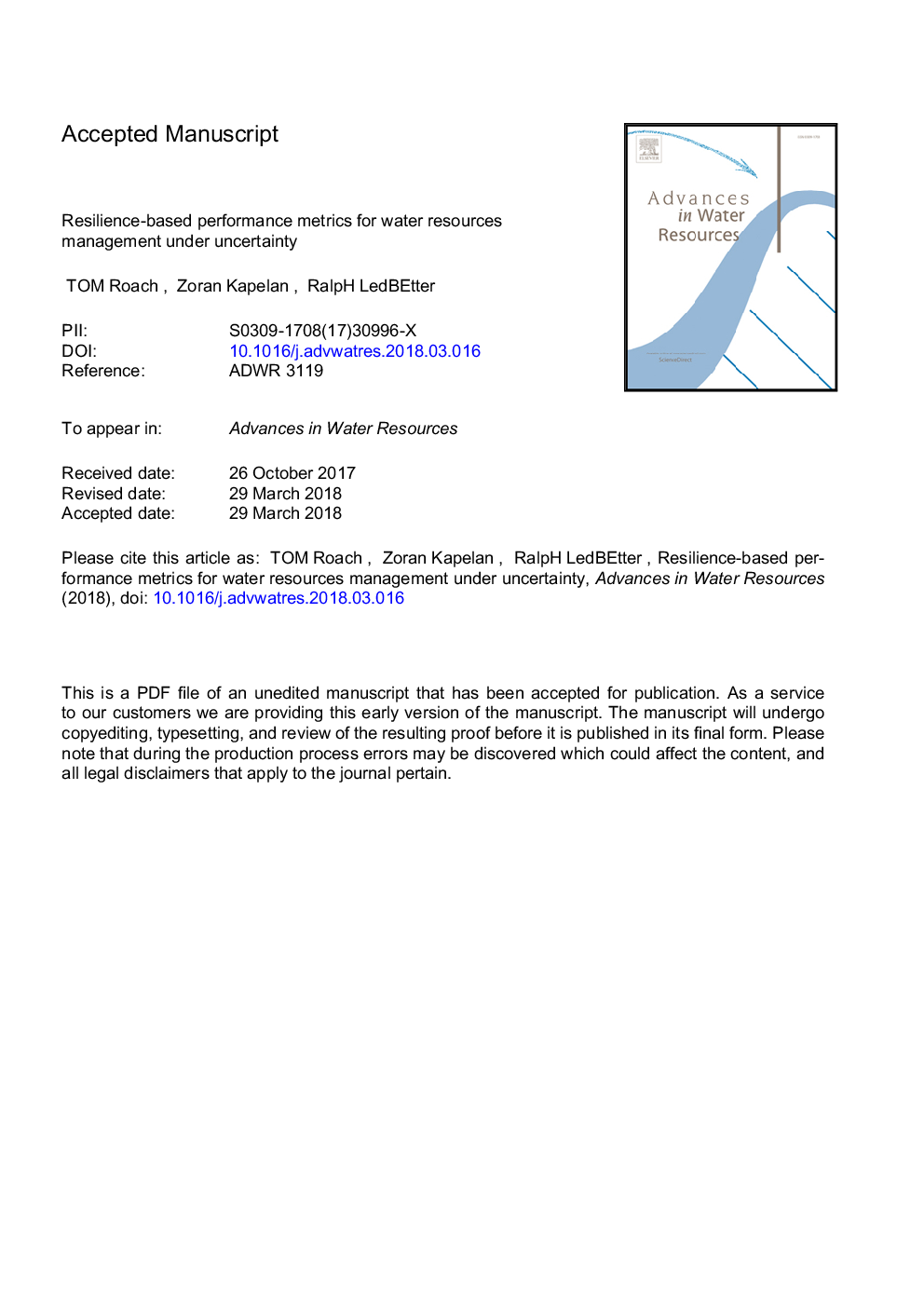ترجمه فارسی عنوان مقاله
معیارهای عملکرد مبتنی بر انعطاف پذیری برای مدیریت منابع آب تحت عدم اطمینان
عنوان انگلیسی
Resilience-based performance metrics for water resources management under uncertainty
| کد مقاله | سال انتشار | تعداد صفحات مقاله انگلیسی |
|---|---|---|
| 93979 | 2018 | 30 صفحه PDF |
منبع

Publisher : Elsevier - Science Direct (الزویر - ساینس دایرکت)
Journal : Advances in Water Resources, Volume 116, June 2018, Pages 18-28
ترجمه کلمات کلیدی
انعطاف پذیری، سازگاری تغییرات اقلیمی، مدیریت منابع آب، تامین آب، معیارهای عملکرد، قابلیت اطمینان،
کلمات کلیدی انگلیسی
Resilience; Climate change adaptation; Water resources management; Water supply; Performance metrics; Reliability;

